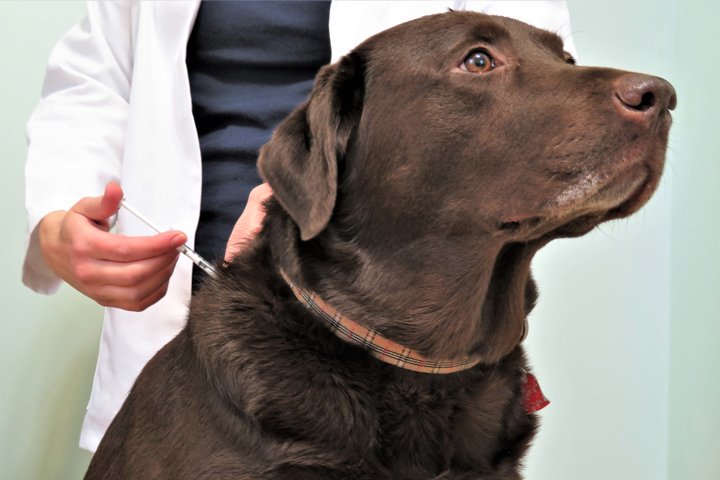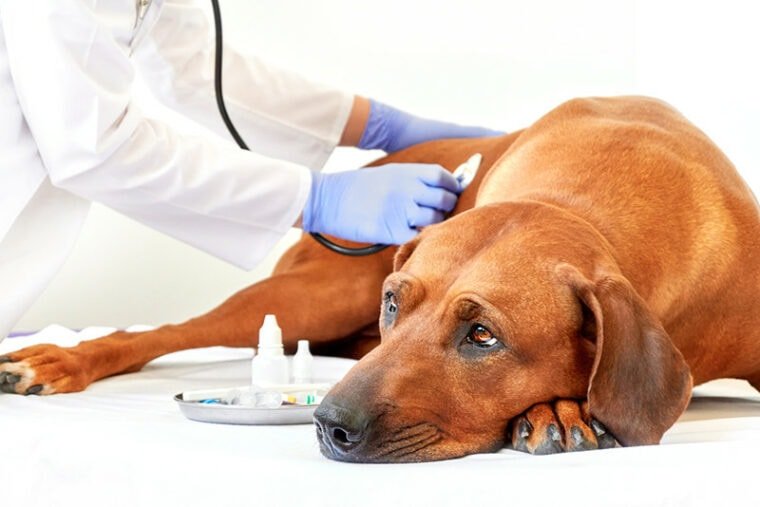What All Information You Need To Know About Diabetes in Dogs
How can I treat my dog’s diabetes at home?
Managing diabetes in dogs requires a comprehensive approach, and it’s important to work closely with your veterinarian for an individualized treatment plan. Home care for a diabetic dog often includes diet management, insulin administration (if prescribed by the vet), monitoring blood glucose levels, and regular veterinary check-ups. Here are some general guidelines for managing diabetes in dogs at home:
- Diet Management:
- Feed your dog a consistent and well-balanced diet. Your veterinarian may recommend a special prescription diet designed for diabetic dogs or suggest a specific feeding schedule.
- Avoid giving your dog table scraps or treats that are high in sugar and carbohydrates.
- Ensure your dog has access to fresh water at all times.
- Insulin Administration:
- If your dog requires insulin, administer it as prescribed by your veterinarian. This may involve giving injections under the skin (subcutaneously).
- Learn proper insulin administration techniques from your vet or a veterinary technician.
- Stick to a regular feeding schedule in coordination with insulin administration.
- Monitoring Blood Glucose Levels:
- Regularly monitor your dog’s blood glucose levels at home using a glucometer if recommended by your veterinarian.
- Keep a log of blood glucose readings and share them with your vet during check-ups.
- Regular Exercise:
- Incorporate regular, consistent exercise into your dog’s routine, as it can help manage blood glucose levels. Consult with your veterinarian to determine an appropriate exercise plan for your dog’s health condition.
- Weight Management:
- Maintain a healthy weight for your dog. Obesity can worsen diabetes, so work with your veterinarian to establish a weight management plan.
- Regular Veterinary Check-ups:
- Schedule regular veterinary check-ups to monitor your dog’s overall health and adjust the treatment plan as needed.
- Discuss any changes in your dog’s behavior, appetite, or overall condition with your veterinarian promptly.
- Education and Support:
- Educate yourself about diabetes in dogs, including its signs, symptoms, and management.
- Seek support from your veterinarian or local support groups to share experiences and gain insights into managing diabetes in dogs.
It’s crucial to follow your veterinarian’s recommendations and attend regular check-ups to assess your dog’s response to treatment. Managing diabetes at home requires commitment, consistency, and ongoing communication with your veterinarian. If you notice any changes in your dog’s health or behavior, contact your vet promptly.
What is the cure for diabetes in dogs?
As of my last knowledge update in January 2022, there is no cure for diabetes in dogs. Diabetes in dogs is a chronic condition that requires lifelong management. The primary goal of treatment is to control blood glucose levels and provide a good quality of life for the affected animals.
The standard approach to managing diabetes in dogs involves:
- Insulin Therapy:
- Many diabetic dogs require insulin therapy to help regulate blood sugar levels. Insulin is typically administered through subcutaneous injections. The specific insulin type and dosage may vary for each dog and are determined by the veterinarian.
- Diet Management:
- A controlled and consistent diet is crucial in managing diabetes in dogs. Veterinarians often recommend prescription diets with controlled levels of carbohydrates and a consistent feeding schedule.
- Regular Monitoring:
- Regular monitoring of blood glucose levels is essential to adjust insulin doses and ensure proper management. Some pet owners are trained to monitor their dog’s blood glucose levels at home.
- Exercise:
- Regular, moderate exercise is important for managing diabetes in dogs. It helps improve insulin sensitivity and contributes to overall health.
- Veterinary Check-ups:
- Regular veterinary check-ups are necessary to assess the dog’s overall health, monitor blood glucose levels, and make any necessary adjustments to the treatment plan.
While there is no cure, with proper management, many diabetic dogs can lead fulfilling and relatively normal lives. Advances in veterinary medicine and ongoing research may lead to new treatments or approaches in the future. It’s important for pet owners to work closely with their veterinarians to develop a comprehensive and individualized treatment plan for their diabetic dogs. If there have been updates or developments in this field since my last knowledge update, it’s advisable to consult with a veterinarian for the latest information.
What food is good for diabetic dogs?
Feeding a diabetic dog requires careful consideration of the diet to help manage blood sugar levels. It’s important to work closely with your veterinarian to develop a nutrition plan tailored to your dog’s specific needs. In general, a diet for diabetic dogs should aim to regulate blood glucose levels through controlled carbohydrate intake and consistent feeding schedules. Here are some general guidelines:
- High-Quality, Balanced Diet:
- Choose a high-quality commercial dog food that is balanced and meets the nutritional needs of your dog. Look for dog foods labeled as “complete and balanced.”
- Low- to Moderate-Carbohydrate Content:
- Diabetic dogs may benefit from diets with a controlled carbohydrate content. Consult with your veterinarian to determine the appropriate level of carbohydrates for your dog’s specific needs.
- Consistent Feeding Schedule:
- Establish a consistent feeding schedule with the same amount of food offered at each meal. This helps regulate blood sugar levels and facilitates insulin management.
- Prescription Diets:
- Some veterinarians may recommend prescription diets formulated for diabetic dogs. These diets often have specific carbohydrate levels and other nutritional modifications to support diabetes management.
- High-Quality Protein:
- Choose dog foods with high-quality protein sources. Protein can help maintain muscle mass and provide a more balanced diet.
- Moderate Fat Content:
- Opt for dog foods with moderate fat content. Fat contributes to the overall energy content of the diet but should be controlled, especially if weight management is a concern.
- Avoid High-Fat Treats:
- Limit or avoid high-fat treats, as they can contribute to weight gain. Instead, consider offering small amounts of low-calorie treats or vegetables as snacks.
- Regular Monitoring:
- Monitor your dog’s response to the diet and work closely with your veterinarian to make any necessary adjustments based on changes in weight, blood glucose levels, and overall health.
Remember that individual dogs may have unique dietary needs, and the optimal diet for one diabetic dog may differ from another. Regular veterinary check-ups are essential to monitor your dog’s health and adjust the diet and treatment plan as needed. It’s crucial to follow your veterinarian’s recommendations for managing diabetes in your dog effectively.
How long do dogs live with diabetes?
The lifespan of a dog with diabetes can vary depending on several factors, including the severity of the diabetes, the effectiveness of treatment, the presence of concurrent health conditions, and the overall care provided. With proper management, many diabetic dogs can live fulfilling lives, and their lifespan may not be significantly different from that of non-diabetic dogs.
Here are some factors that can influence the lifespan of a dog with diabetes:
- Early Detection and Diagnosis:
- Early detection and diagnosis of diabetes allow for timely initiation of treatment. Dogs diagnosed and treated early may have a better prognosis.
- Consistent Treatment:
- Consistent and effective management of diabetes, including insulin therapy, a balanced diet, regular exercise, and monitoring, is crucial for the dog’s overall health and longevity.
- Control of Blood Glucose Levels:
- Maintaining stable and controlled blood glucose levels is essential in managing diabetes. Regular monitoring and adjustments to insulin dosage may be necessary to achieve optimal control.
- Management of Concurrent Conditions:
- Dogs with diabetes may be more prone to other health issues, such as urinary tract infections or pancreatitis. Managing these concurrent conditions is important for the overall well-being of the dog.
- Veterinary Care:
- Regular veterinary check-ups are necessary to monitor the dog’s health, assess the effectiveness of the treatment plan, and make any necessary adjustments.
It’s important to note that while diabetes is a chronic condition, it can be successfully managed, allowing many dogs to lead happy and healthy lives. Dogs with diabetes can live for several years with proper care and treatment.
Each dog is unique, and the progression of diabetes can vary. It’s crucial for dog owners to work closely with their veterinarians to develop an individualized treatment plan and to monitor their dog’s response to the treatment over time. Regular veterinary check-ups and open communication with the veterinarian can help ensure the best possible outcome for a dog with diabetes.
Why do dogs get diabetes?
Diabetes in dogs, like in humans, is a complex condition with multiple contributing factors. The primary form of diabetes in dogs is diabetes mellitus, and it is mainly classified into two types: insulin-deficient diabetes (similar to Type 1 diabetes in humans) and insulin-resistant diabetes (similar to Type 2 diabetes in humans).
Here are some common reasons why dogs may develop diabetes:
- Genetic Predisposition:
- Certain breeds are more prone to developing diabetes, suggesting a genetic component. Breeds such as Poodles, Dachshunds, Miniature Schnauzers, Cairn Terriers, and Beagles are among those with an increased risk.
- Autoimmune Factors:
- In some cases, the dog’s immune system may attack and destroy the insulin-producing cells in the pancreas, leading to insulin deficiency. This is more common in insulin-deficient diabetes.
- Obesity:
- Obesity is a significant risk factor for developing diabetes in dogs. Excess body weight can contribute to insulin resistance, where the body’s cells become less responsive to insulin.
- Age:
- Diabetes is more common in older dogs, typically around 7 to 9 years of age. However, it can occur at any age.
- Pancreatitis:
- Inflammation of the pancreas, known as pancreatitis, can damage the insulin-producing cells, leading to diabetes.
- Female Gender:
- Female dogs may have a slightly higher risk of developing diabetes compared to males.
- Other Hormonal Conditions:
- Hormonal disorders, such as Cushing’s disease or certain reproductive hormone imbalances, can contribute to diabetes development.
- Genetic Factors:
- Genetic factors can play a role, especially in certain breeds where a genetic predisposition to diabetes has been identified.
- Environmental Factors:
- Environmental factors, such as a sedentary lifestyle and an inappropriate diet, can contribute to the development of diabetes.
It’s important to note that while these factors may increase the risk of diabetes, not all dogs with these risk factors will develop the condition. Diabetes in dogs is manageable with proper veterinary care, including insulin therapy, a balanced diet, regular exercise, and consistent monitoring. Early detection and intervention are key to successful management and improved quality of life for dogs with diabetes.
Can a dog recover from diabetes?
As of my last knowledge update in January 2022, diabetes in dogs is generally considered a chronic condition that requires lifelong management. In most cases, diabetes is not completely curable, but it is often manageable with proper veterinary care and ongoing treatment.
The goal of treatment for diabetes in dogs is to regulate blood glucose levels and provide a good quality of life. The main components of managing diabetes in dogs include insulin therapy, a controlled and consistent diet, regular exercise, and monitoring blood glucose levels.
While complete recovery from diabetes may be rare, there are instances where dogs may experience a reduction in insulin requirements or even go into diabetic remission. Diabetic remission refers to a period during which a dog’s blood glucose levels stabilize without the need for insulin. However, remission is not always permanent, and dogs may require ongoing monitoring and potential adjustments to the treatment plan.
Factors that may influence the possibility of remission or reduced insulin requirements include:
- Early Detection and Treatment: Dogs diagnosed and treated early in the course of the disease may have a better chance of achieving stable blood glucose control.
- Weight Management: Achieving and maintaining a healthy weight through diet and exercise can positively impact insulin sensitivity.
- Consistent Treatment: Following a consistent treatment plan, including regular administration of insulin, adhering to a balanced diet, and providing regular exercise, is crucial for managing diabetes.
- Individual Variation: Each dog is unique, and the response to treatment can vary. Some dogs may experience better control of diabetes than others.
It’s important for dog owners to work closely with their veterinarians to monitor their dog’s response to treatment and make any necessary adjustments to the management plan. Regular veterinary check-ups, blood glucose monitoring, and open communication with the veterinarian are key elements in providing the best care for a dog with diabetes.
It’s advisable to consult with a veterinarian for the most current information and guidance on the management of diabetes in dogs, as veterinary knowledge and practices may evolve over time.
What age do dogs get diabetes?
Diabetes in dogs can occur at any age, but it is more commonly diagnosed in middle-aged to older dogs. While there is no specific age at which all dogs may develop diabetes, the risk tends to increase with age. Diabetes is relatively rare in puppies and young dogs.
The typical age range for the onset of diabetes in dogs is often around 7 to 9 years, but it can occur earlier or later. Certain factors, such as breed, genetics, and overall health, can influence the likelihood of diabetes development.
Some breeds have a higher predisposition to diabetes, and it may occur earlier in these breeds. Breeds such as Poodles, Dachshunds, Miniature Schnauzers, Cairn Terriers, and Beagles are among those that may have an increased risk.
It’s important for dog owners to be vigilant about their pets’ health at any age and to recognize the signs of diabetes. These signs may include increased thirst, frequent urination, weight loss, increased hunger, and lethargy. If any of these symptoms are observed, it is crucial to seek veterinary attention promptly.
Early detection and diagnosis of diabetes can contribute to effective management and an improved quality of life for dogs with the condition. Regular veterinary check-ups, especially as dogs age, can help in monitoring their overall health and identifying any potential health issues, including diabetes, in a timely manner.
What not to feed a diabetic dog?
Feeding a diabetic dog requires careful consideration to help regulate blood glucose levels and manage the condition effectively. It’s important to avoid certain foods and treats that can negatively impact a diabetic dog’s health. Here are things to avoid feeding a diabetic dog:
- High-Glycemic Carbohydrates:
- Foods with high-glycemic carbohydrates can cause rapid spikes in blood sugar levels. Avoid feeding foods with excessive amounts of sugars and refined carbohydrates. This includes sugary treats, candies, and high-carbohydrate snacks.
- Table Scraps:
- Table scraps, especially those high in fat and carbohydrates, should be avoided. These can disrupt the carefully balanced diet necessary for managing diabetes.
- High-Fat Foods:
- High-fat foods, while not directly affecting blood glucose levels, can contribute to obesity. Obesity can lead to insulin resistance, making it more challenging to regulate blood sugar.
- Dog Treats with High Sugar Content:
- Many commercially available dog treats are high in sugars and carbohydrates. Look for treats specifically designed for diabetic dogs, or choose low-calorie, low-carbohydrate options. Consult with your veterinarian for suitable treat choices.
- Fruits with High Sugar Content:
- While fruits can be a healthy part of a dog’s diet, some fruits are high in natural sugars. Limit fruits like grapes, raisins, and bananas. Opt for small portions of berries or apple slices, and remove seeds and pits.
- Certain Vegetables:
- Some vegetables have higher carbohydrate content and should be given in moderation. Carrots and green beans are generally safe but should be included in the overall daily carbohydrate count.
- High-Fat Meats:
- While protein is an essential part of a dog’s diet, choose lean sources of meat. High-fat meats can contribute to obesity and may not be ideal for diabetic dogs.
- Human Medications and Supplements:
- Never give your dog medications or supplements intended for humans without consulting your veterinarian. Some medications and supplements may interfere with insulin or have adverse effects on blood glucose levels.
- Alcohol:
- Alcohol can affect blood sugar levels and can be toxic to dogs. Avoid feeding any foods or treats that contain alcohol.
Always consult with your veterinarian to establish a suitable diet plan for your diabetic dog. A balanced, consistent, and controlled diet is crucial for managing diabetes in dogs. Regular veterinary check-ups can help monitor your dog’s overall health and ensure that the diet plan is effective.
Do dogs with diabetes sleep a lot?
Excessive sleeping or lethargy can be a symptom of diabetes in dogs, but it is not specific to the condition. Diabetes can affect a dog’s energy levels and overall behavior, and some dogs with diabetes may experience increased fatigue or sleepiness. However, there are various other potential causes of increased sleep or lethargy in dogs, and it’s essential to consider the overall context of the dog’s health.
Common signs of diabetes in dogs may include:
- Increased Thirst and Urination:
- Dogs with diabetes often drink more water than usual and may urinate frequently.
- Weight Loss:
- Despite increased appetite, dogs with diabetes may lose weight.
- Increased Hunger:
- Some diabetic dogs may experience an increase in appetite.
- Lethargy:
- A dog with diabetes may appear lethargic or less active.
- Changes in Gait or Mobility:
- Diabetes can sometimes affect a dog’s gait or lead to weakness in the hind legs.
If you observe changes in your dog’s behavior, including increased sleepiness or lethargy, it’s crucial to consult with a veterinarian. The veterinarian can perform a thorough examination, conduct diagnostic tests, and assess the dog’s overall health to determine the underlying cause.
Other conditions or factors that can lead to increased sleepiness in dogs include:
- Age:
- Older dogs may naturally sleep more than younger dogs.
- Pain or Discomfort:
- Pain or discomfort from conditions such as arthritis or dental issues can affect a dog’s activity level.
- Infection or Illness:
- Various illnesses or infections can cause lethargy.
- Side Effects of Medications:
- Some medications may cause drowsiness or lethargy as a side effect.
- Stress or Anxiety:
- Stressful situations or changes in the environment can impact a dog’s behavior.
If your dog is exhibiting changes in behavior, it’s recommended to seek prompt veterinary attention for a thorough evaluation. Early detection and diagnosis of any underlying health issues, including diabetes, can contribute to effective management and improved outcomes.
How can I test my dog for diabetes at home?
Testing for diabetes in dogs typically requires veterinary supervision and diagnostic tests performed at a veterinary clinic. While there are home glucose monitoring kits available, the process involves obtaining a blood sample from your dog, which can be challenging and stressful for both the owner and the pet.
Here are some steps to monitor your dog’s health and recognize potential signs of diabetes:
- Observation:
- Be vigilant for signs of diabetes, including increased thirst, frequent urination, changes in appetite, weight loss, and lethargy.
- Regular Vet Check-ups:
- Schedule regular veterinary check-ups for your dog. Routine blood tests, including a blood glucose test, can help detect diabetes or other health issues.
- Urinalysis:
- Your veterinarian may recommend a urinalysis to check for glucose levels in the urine. Persistent glucose in the urine can be an indicator of diabetes.
- Blood Glucose Monitoring:
- If your dog is diagnosed with diabetes, your veterinarian will guide you on how to monitor blood glucose levels at home. This typically involves using a glucometer to test a small blood sample obtained by pricking the dog’s ear or another suitable location.
- Regular Vet Visits for Monitoring:
- Regular veterinary visits are essential for monitoring your dog’s blood glucose levels and adjusting the treatment plan, including insulin dosage, as needed.
It’s important to note that home testing for diabetes requires proper training, and it may not be suitable for all dogs. Additionally, self-monitoring may not provide a complete picture of your dog’s overall health, and professional veterinary guidance is crucial.
If you suspect your dog may have diabetes or if you observe any concerning signs, consult with your veterinarian promptly. Early detection and proper management are key to effectively addressing diabetes in dogs and improving their quality of life.
Can diabetes cause death in dogs?
Untreated or poorly managed diabetes in dogs can lead to serious complications and, in severe cases, can be life-threatening. However, with proper veterinary care and effective management, many dogs with diabetes can lead normal and fulfilling lives.
Complications associated with untreated or poorly controlled diabetes in dogs include:
- Ketoacidosis:
- When diabetes is not properly managed, the body may start breaking down fat for energy, leading to the production of ketones. Excessive ketones in the blood can result in a condition called ketoacidosis, which is a medical emergency and can be life-threatening.
- Hyperglycemia:
- Prolonged high blood sugar levels (hyperglycemia) can lead to various complications, affecting organs such as the kidneys, liver, and eyes.
- Organ Damage:
- Over time, uncontrolled diabetes can lead to damage to organs and tissues throughout the body, including the kidneys, eyes, nerves, and blood vessels.
- Weakened Immune System:
- Diabetes can compromise the immune system, making dogs more susceptible to infections.
While diabetes itself may not directly cause death, the complications associated with the condition can have serious consequences. This emphasizes the importance of early detection, proper diagnosis, and effective management of diabetes in dogs.
Management of diabetes typically involves insulin therapy, a controlled diet, regular exercise, and consistent monitoring of blood glucose levels. Regular veterinary check-ups are essential to assess the dog’s response to treatment and make any necessary adjustments to the management plan.
If you suspect your dog may have diabetes or if you observe any concerning signs, such as increased thirst, frequent urination, weight loss, or lethargy, it’s crucial to seek veterinary attention promptly. Early diagnosis and appropriate treatment significantly improve the prognosis for dogs with diabetes.
How do you treat a diabetic dog without insulin?
Insulin therapy is the standard and most effective treatment for managing diabetes in dogs. It’s crucial for regulating blood glucose levels and maintaining a diabetic dog’s health. However, if for some reason insulin is not an option, it’s essential to work closely with a veterinarian to explore alternative strategies. Keep in mind that alternative approaches may not be as effective, and insulin remains the primary treatment for diabetic dogs.
Here are some considerations if insulin is not an option:
- Dietary Management:
- Work with your veterinarian to create a specialized diet plan for your diabetic dog. A consistent and balanced diet can help manage blood glucose levels to some extent. Consider feeding prescription diets formulated for diabetic dogs.
- Exercise:
- Regular and consistent exercise is important for diabetic dogs. Exercise can contribute to better blood sugar control and overall health. Consult with your veterinarian to determine an appropriate exercise plan based on your dog’s health condition.
- Oral Medications:
- There are some oral medications that may be used in the management of diabetes in dogs. However, it’s crucial to note that oral medications alone may not be as effective as insulin, and their use should be carefully considered and monitored by a veterinarian.
- Monitoring Blood Glucose Levels:
- Regularly monitor your dog’s blood glucose levels at home using a glucometer, as advised by your veterinarian. This helps track changes and guide adjustments in the treatment plan.
- Regular Veterinary Check-ups:
- Schedule regular veterinary check-ups to assess your dog’s overall health, monitor blood glucose levels, and make any necessary adjustments to the treatment plan.
It’s important to emphasize that managing diabetes without insulin requires careful and ongoing veterinary supervision. Insulin is a hormone that regulates blood glucose, and alternative approaches may not be as effective in maintaining stable blood sugar levels.
If insulin is not an option, your veterinarian will help you explore the best available alternatives based on your dog’s specific health condition and needs. Always follow your veterinarian’s guidance, and never attempt to make significant changes to your dog’s treatment plan without professional advice.
Do diabetic dogs lose weight?
Yes, weight loss is one of the common symptoms of diabetes in dogs. Diabetic dogs may experience weight loss despite having an increased appetite. The weight loss is often due to the body’s inability to properly use glucose (sugar) for energy, leading to the breakdown of stored fats and proteins for fuel.
The main reasons for weight loss in diabetic dogs include:
- Insulin Deficiency or Resistance:
- In diabetes, the body either does not produce enough insulin (insulin deficiency) or the cells become resistant to the insulin that is produced. Insulin is necessary for cells to take up glucose from the bloodstream. Without proper insulin function, glucose cannot be used for energy, and the body starts breaking down fats and proteins.
- Increased Appetite (Polyphagia):
- Diabetic dogs often exhibit an increased appetite (polyphagia) as a result of the body’s inability to use the consumed glucose efficiently. Despite eating more, the dog may still lose weight due to the breakdown of other energy sources.
- Glycosuria:
- Excess glucose in the bloodstream may spill into the urine (glycosuria). This loss of glucose in the urine contributes to weight loss, as calories are excreted rather than utilized by the body.
If you notice that your dog is losing weight or showing other signs of diabetes, such as increased thirst, frequent urination, and lethargy, it’s crucial to seek veterinary attention promptly. Early detection and proper management are essential for improving the prognosis and quality of life for dogs with diabetes.
Once diagnosed, treatment typically involves insulin therapy, a controlled diet, regular exercise, and ongoing monitoring of blood glucose levels. The goal is to regulate blood sugar levels and address the underlying causes of weight loss. Regular veterinary check-ups are essential to assess the dog’s response to treatment and make any necessary adjustments to the management plan.








